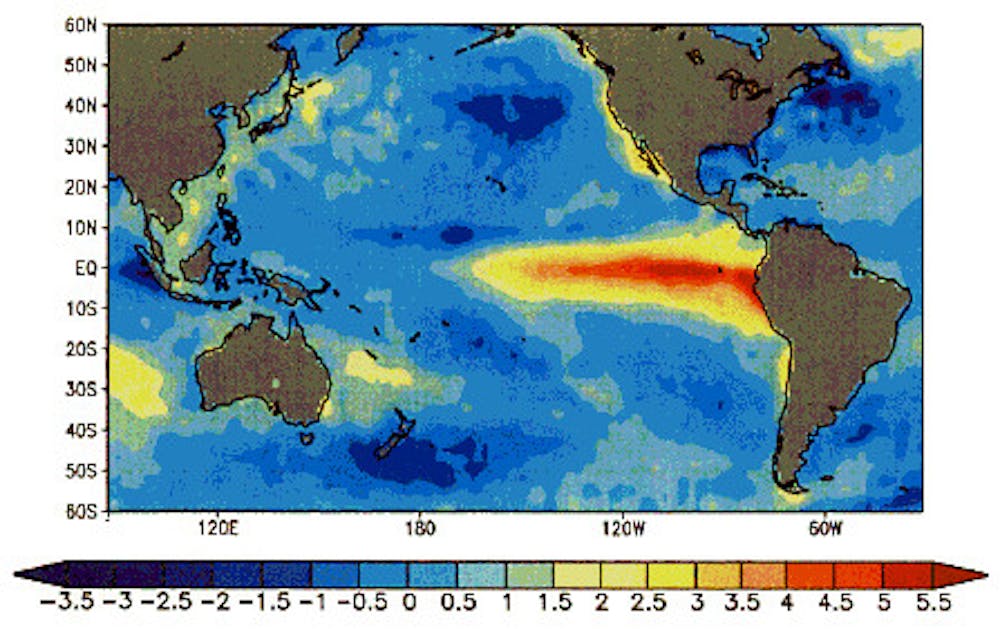By Allyson Ernst
El Niño.
You may have heard this term thrown around this year as weathermen and Ocean Scientists predict an El Niño for the history books this winter. I don’t know about you, but I really didn’t know what this weather jargon was referring to until I did some research.
Here is what I found out. El Niño means “The Little Boy” or “The Christ Child” in Spanish. In the 1600s, South American fishermen named this weather system as a reference to the time of year when they would notice unusually warm water in the Pacific Ocean.
Now we know this time of year to be late December, but the fishermen used this time to head back to shore to spend time with families and repair their equipment because the warm water was bad for fishing.
Today, El Niño doesn’t refer to a break from work; it refers to the large-scale ocean and atmosphere interaction linked to a warming in sea surface temperatures in the central and east-central Pacific along the equator.
What causes this warming? Well that’s the million-dollar question for climate scientists. We see this anomalous warming of the central and Eastern Pacific every two to seven years. We know that when this happens, this influences weather in the Western Pacific. Previous El Niño systems aid in making some fairly accurate guesses for what is to come.
The Southwest, including California, Arizona, and New Mexico, will experience wetter conditions than usual. This has been experienced already with the mudslides occurring in once drought-ridden California this month.
Beginning in Texas and moving east to Florida, we expect to see colder than average temperatures this winter. This cold air headed to the Gulf Coast is good news for Hurricane season, as the cold air helps prevent tropical storms from strengthening and shortens the duration. Up towards the Northern states, such as Montana and the Dakotas, we could expect a warmer winter.
Here in the Ohio valley, we can expect drier conditions this winter, which unfortunately could mean no snow days.
El Niño won’t last forever as it usually dissipates in the spring. But this winter we are in for some crazy weather as this El Niño could possibly be the strongest on record surpassing those in 1997-1998 and 1982-1983. During El Niño 1997-1998, flooding and destruction caused35 Californian counties to be considered federal disaster zones.
Past strong El Niños have showed similar trends, so it is reasonable to expect this year’s El Niño to follow the consistent pattern.
But, as usual with the weather, only time will tell.
El Niño: Wet, wild and headed our way

